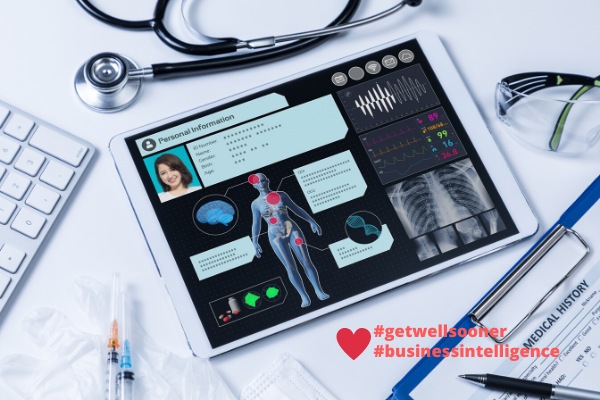

3 Ways IoT is About to Change Healthcare As We Know It
What is IoT, and how is it impacting the healthcare industry? IoT, meaning the Internet of Things, refers to a system of people, objects with unique identifiers, and digital machines.
It is used to transfer information and data over a network without human intervention. IoT’s practical possibilities in the healthcare industry are endless and, in many ways, benefit a patient.
Foods That Cause Inflammation, depending on the context, can be healthy or detrimental. It is the natural manner of safeguarding your body from injuries or sickness, on the one hand. It can assist your body to protect itself against disease and boost cures.
Below are three significant ways that IoT is bringing change to healthcare.
The most efficient way and least expensive way to access healthcare is gradually when you are sure you don’t need it. Health education is the best way of preventing diseases.
Through health education, individuals can make informed decisions on health practices, sanitation, food consumption, and health resources available, such as preventative medicine. buy xanax 2 mg tablet online
Preventative medicine is usually underrated and mostly neglected by individuals who dismiss the need for regular checkups.
Fortunately, IoT can make these regular checkups more convenient and a part of these individuals’ daily lives. Imagine having a device that can proactively monitor your vitals and let you when you need to seek further care.
When it comes to health education, IoT helps health practitioners to roll out virtual consultation meeting with the public.
As a result, health consumers can make informed choices concerning their health, for instance, avoiding self-medication. The public can also be informed about the need to adopt a healthy lifestyle and prevent lifestyle diseases, such as obesity.
These health practitioners can also meet virtually amongst themselves to discuss best practices in the industry.
For example, they could meet to discuss the best practices to manage high infant mortality rates in particular cultural settings. Such a process can be enabled by a technology powered by the JD Edwards systems.
IoT can also be used to make predictions in the future and deploy ways to combat possible outbreaks and infections.
Misdiagnosis is a major challenge in the health care industry. Incidences such as medical errors can be prevented using IoT. If prevention fails to work or individuals dismiss prevention measures, diagnosis, and treatment is the next best step in the event of an illness.
IoT ensures that diagnosis is timely and accurate, saving time and money and subsequently avoiding potential damage to individuals’ health.
Using IoT devices powered by the JD Edward systems, health practitioners can monitor their patients’ health in real-time and develop possible diagnoses. This they do via assessing various variables, such as temperature.
Doctors can use these software-powered devices, such as bio-sensors, to measure variables and establish any correlation.
They can also utilize a continuous glucose monitor to assess blood sugar levels. Once these health providers notice any anomaly, they will summon these patients to their clinics for thorough checkup and diagnosis.
Nurses and doctors can use IoT to offer a customized service to their patients. Such customized plans help these patients realize optimum health outcomes. Buy online Tramadol 100mg tablets usa
IoT is crucial in asset and inventory management. For a healthcare organization to provide maximum health services, it must invest in short and long-term infrastructure.
Hospitals and physicians’ offices mostly contain controlled substances, medication, and other vital equipment. IoT can help track all these important items and ensure they don’t fall into the wrong hands.
Healthcare organizations can also monitor equipment in real-time and potentially enhance their performance.
There is also the need to enhance innovation for improved performance of healthcare equipment and processes. An essential factor that healthcare management looks for is the ability to improve agility and the need to downgrade downtime.
A robust system powered by the JD Edwards should be implemented in a healthcare organization to prevent interruptions in the workplace. IoT ensures all equipment is up to date and functioning normally to provide proper healthcare.
Unfortunately, some factors hinder IoT from being implemented in all healthcare organizations. These include the high cost of new technology, potential security threats from cybercriminals, and inexperience in tech matters among hospital staff.
These obstacles may have the power to withhold the progress of IoT in some healthcare organizations.
However, as healthcare organizations figure out IoT and how it will impact healthcare, they will begin to notice the gradual introduction of systems, devices, and processes that collectively will increase the quality of healthcare.
The way we consume entertainment has changed dramatically, with Subscription Video on Demand (SVOD) leading…
The Evolution of Inventory Tracking RFID inventory management software is transforming how businesses track, manage,…
The Unexpected Costs of Unprotected Windshields Polaris Ranger windshields protection is more than just a…
Probably one of the best things people do to secure their finances is the purchase…
The iPhone 15 is still a great buy Released in 2023, the iPhone 15 brought…
By Josh Breaker-Rolfe Data security posture management (DSPM) is the rising star of the data…